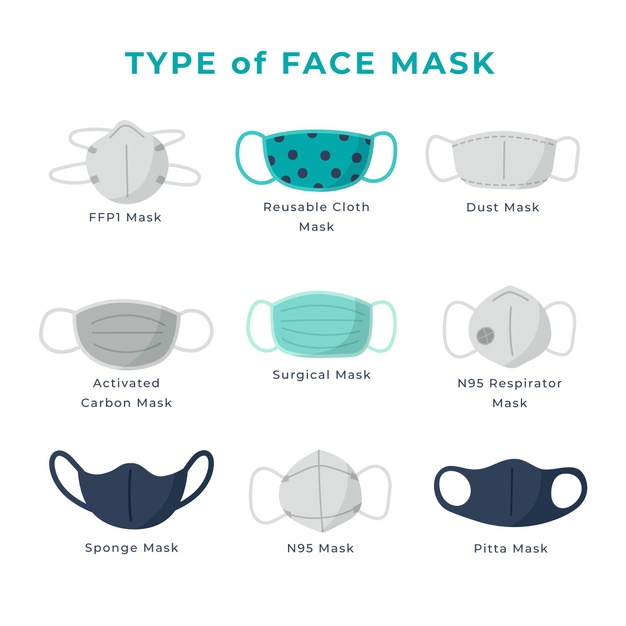
In a new study, scientists have analyzed how effective consumer-grade masks, medical masks, and modified medical masks are at protecting the wearer from particles of a similar size to SARS-CoV-2.
The research, which appears in the journal JAMA Internal Medicine, provides more information for the public and clinicians on which masks to wear, and what modifications are likely to be effective.
Masks
SARS-CoV-2, the virus that causes COVID-19, primarily infects a person’s respiratory tract. As the infection develops, a high amount of the virus builds up in a person’s saliva and other respiratory secretions.
This explains a fundamental way in how the virus spreads: being ejected from a person with the infection via their nose or mouth as they talk, sing, sneeze, or cough. Wearing masks to interrupt this route of transmission has been increasingly recommended by scientists, clinicians, and government agencies.
For example, according to Dr. Robert R. Redfield, Director of the Centers for Disease Control and Prevention (CDC), “[c]loth face coverings are one of the most powerful weapons we have to slow and stop the spread of the virus — particularly when used universally within a community setting.”
“All Americans have a responsibility to protect themselves, their families, and their communities,” he emphasizes.
Experts believe face masks effectively reduce viral transmission because they block a person from expelling the virus and help prevent a person from receiving the expelled virus.
The protective effects of face masks are important for medical professionals, who are particularly vulnerable to the virus due to their high rates of exposure while working in clinical settings.
Many clinicians have access to medical procedure masks, while individuals sometimes modify them with the intention of boosting their ability to block viral transmission. However, it is not clear which modifications are the most effective.
Members of the public have access to a wide variety of masks, including home-made and improvised variants. Understanding which types of face coverings are most effective at blocking the virus is important as it enables people to increase their protection against the virus.
The scientists behind the present study tested numerous modifications to medical procedure masks alongside a range of consumer-grade masks.
Their aim was to determine the masks’ fitted filtration efficiency (FFE), which indicates their effectiveness at blocking particles of similar size to those of SARS-CoV-2.
To achieve this, the researchers used a custom-built exposure chamber at the Environmental Protection Agency’s Human Studies Facility in Chapel Hill, North Carolina.
A particle generator filled the exposure chamber with particles of sodium chloride ranging in size from 0.02–0.60 micrometers (mcm) — slightly smaller than those of SARS-CoV-2, which range from 0.06–0.14 mcm.
Each of the tested masks had a sampling port installed, enabling the scientists to compare sodium chloride concentrations behind the masks against the concentration in the general atmosphere of the exposure chamber.
The researchers instructed an adult male without a beard to wear the masks. As part of the testing, the team asked him to perform a series of movements of his facial muscles, head, and torso, following the recommendations of the Occupational Safety and Health Administration Fit Testing Protocol.
The masks tested included an unmodified medical procedure mask, the same mask with various modifications to improve its fit, and a variety of consumer-grade masks, including cotton and synthetic masks, bandanas, and a neck gaiter covering.
Range of effectiveness
The scientists found that the FFE of the consumer-grade masks ranged from 26.5–79%.
The most effective was a washed two-layer woven nylon mask, while the least effective was a three-layer woven cotton mask.
The unmodified medical procedure mask had an FFE of 38.5%. All of the modifications to the mask improved its FFE. The most effective was wearing a nylon hosiery sleeve over the face mask, increasing FFE to 80.2%, while tying the ear loops and tucking in the mask’s sides increased FFE to 60.3%.
In contrast, an N95 respirator — the gold standard in protection from small particles — had an FFE of 98.4%.
The scientists point out that while modifications to the medical procedure mask significantly improved its FFE, these require a balance with how comfortable they are to wear.
For example, covering the mask in a nylon hosiery sleeve, or applying rubber bands, were both cumbersome and uncomfortable.
For the scientists, their findings demonstrate the potential effectiveness of masks, whether consumer-grade or intended for medical procedures.
As study co-first author Dr. Phillip Clapp, an inhalation toxicologist and assistant professor of pediatrics at the University of North Carolina School of Medicine, notes:
“While modifications to surgical masks can enhance the filtering capabilities and reduce inhalation of airborne particles by improving the fit of the mask, we demonstrated that the fitted filtration efficiencies of many consumer-grade masks were nearly equivalent to or better than surgical masks.”












